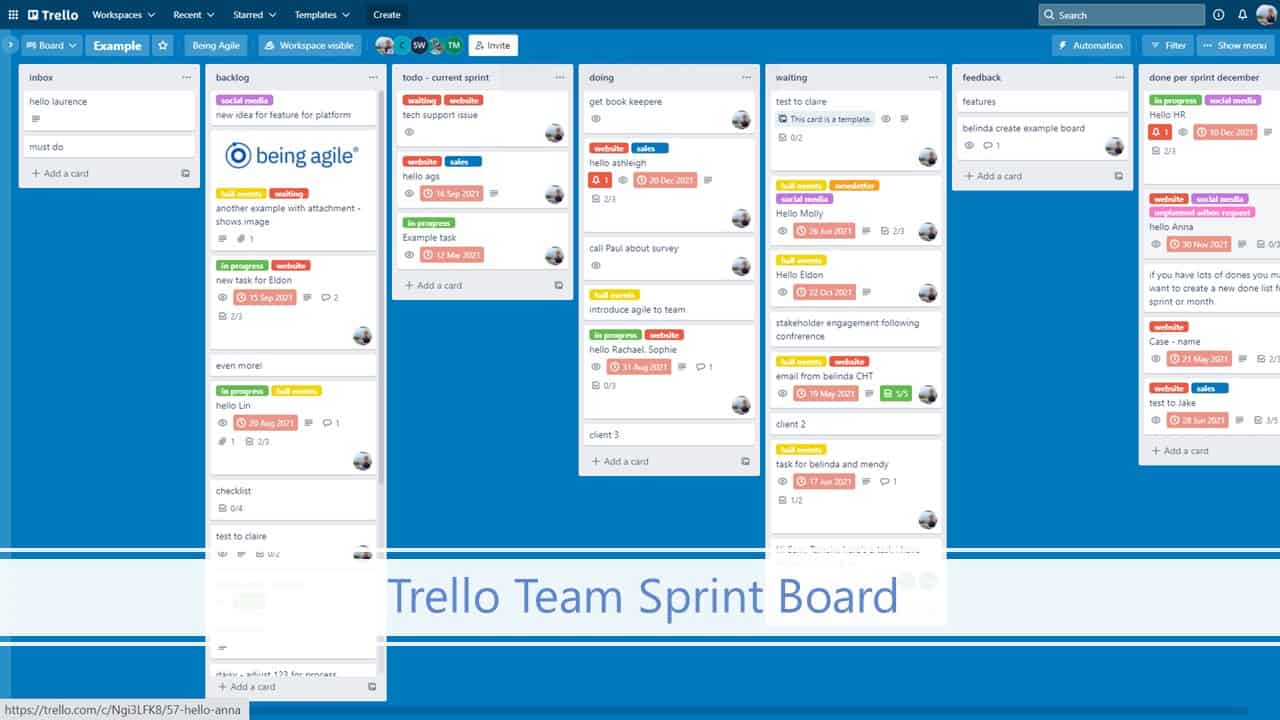Physical boards are great, if it’s an individual board, or you are working with your team in the same location. Boards were originally used by developers who were all co-located in the same office, so a physical board was a viable option for visualising work at a core level. The tactile nature of a physical board helps to bring a team together and help make virtual work visible.
However, there are some limitations to physical boards:
The development of digital solutions has brought with it many benefits, especially helping remote teams to communicate and collaborate.
There are now a wide variety of agile software applications and tools for you to use. From the larger solutions such as Jira, a complex and integrated software development solution primarily used by software development teams, to Simple solutions such as Trello or Asana offering easy to use board templates.
Many business software solution providers have integrated agile tools such as agile boards into it’s features such as Monday and PipeDrive, check for agile add-ons available on your current software solutions.

There are some great online Collaborative whiteboard tools too such as Miro where you can insert template boards and add virtual sticky notes to them, these are great for group sessions where you can map out ideas collectively and then migrate them later onto your digital board.
Many agile digital solutions integrate with other software solutions such as popular business management systems, data storage solutions and communications platforms too helping you to keep things in sync.
There is no one solution we would recommend, it really depends what suits you. A good starting point though is to start with one of the simpler applications such as Trello.
We will use Trello in this course for a few simple reasons:
Digital Agile Boards have become very popular over the past few years. Teams moving away from physical boards onto digital boards for a number of benefits, such as sharing with others, automatic reporting, accessibility and more.
There are a growing number of options for agile software, in this session we will look at one of the most popular, and easy to use packages, Trello.
You can create up to 10 boards for free, share them with others, and access a variety of add-ons and integrations so it’s an easy option to test out digital versions of agile boards.
You can sign up to Trello using this link https://trello.com/belindawaldock1/recommend
Once you have created a new board, you can add lists, as we are creating a digital version of the Being Agile Canvas we have added the headings from the Canvas to our board.
Guide to the Being Agile Method and Planning Canvas
Inbox, Future Work, To do, Doing, Waiting, Feedback, Done.
Then we can add our items to our board. Here we have Blue labels for planned work, and orange for new work. Each work item has been given a due date.

The board shows a sprint in progress. This sprint covers the month of January. Items to be completed in January have been selected for the sprint.
Inbox items are considered using the Important/Urgent matrix, some items are prioritised into the sprint, others placed in Future Work for future sprints
We can move items around on the board, and we can add additional information. Items that have been selected to work on have been tagged with the relevant member of the board to show they are working on it. You can also add check lists, attachments, links and further information to each item.
Now you have your own digital version of the Being Agile Canvas, there are some great guides online to learn more about Trello (and other packages).
Further Resources
Download Free Agile Project Management Canvas